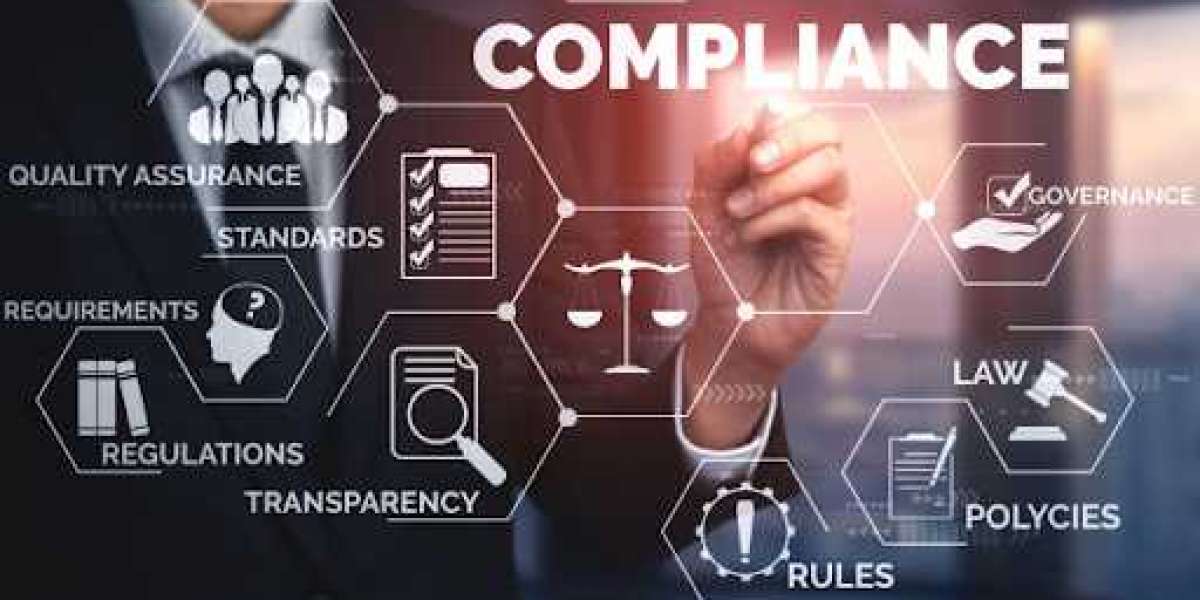In today’s dynamic business environment, maintaining regulatory compliance and addressing materiality issues are crucial for organisational success. Companies In Germany face increasing pressures to align with various standards and regulations while managing their environmental, social, and governance (ESG) responsibilities. Two essential components in this journey are materiality assessments and compliance management systems. This blog explores these concepts, their importance, and how they contribute to effective risk management and strategic decision-making.
Understanding Materiality Assessments
What is a Materiality Assessment?
A materiality assessment is a process used by organisations to identify and prioritise the most significant environmental, social, and governance (ESG) issues that could impact their business operations and stakeholders. The goal is to determine which issues are "material" or critical, influencing decision-making, reporting, and strategic planning.
Why Materiality Assessments Matter
- Stakeholder Engagement: Materiality assessments help organisations understand the concerns and expectations of their stakeholders, including investors, customers, employees, and regulators. By addressing these concerns, businesses can build stronger relationships and enhance their reputation.
- Risk Management: Identifying material issues allows companies to anticipate potential risks and develop strategies to mitigate them. This proactive approach helps avoid operational disruptions and legal issues, thereby protecting the organisation’s assets and ensuring long-term sustainability.
- Strategic Planning: Understanding material issues enables businesses to align their strategies with their core values and stakeholder expectations. This alignment supports better decision-making and helps in setting relevant and achievable goals.
- Enhanced Reporting: Materiality assessments inform sustainability and financial reporting, ensuring that disclosures are relevant and focused on issues that matter most to stakeholders. This leads to more transparent and credible reporting practices.
How to Conduct a Materiality Assessment
- Identify Stakeholders: Begin by identifying key stakeholders who can provide valuable insights into material issues. This includes investors, customers, employees, suppliers, and community representatives.
- Gather Data: Collect data through surveys, interviews, and industry research to understand stakeholder concerns and emerging trends. This data will form the basis for identifying material issues.
- Prioritise Issues: Evaluate the identified issues based on their significance to stakeholders and their potential impact on the organisation. Prioritise issues that are both critical to stakeholders and significant to the company’s success.
- Integrate Findings: Incorporate the results of the assessment into strategic planning, risk management, and reporting processes. Ensure that the identified material issues are addressed in policies, goals, and performance metrics.
- Review and Update: Regularly review and update the materiality assessment to reflect changes in stakeholder expectations, regulatory requirements, and industry trends. This ensures ongoing relevance and effectiveness.
The Role of Compliance Management Systems
What is a Compliance Management System?
A compliance management system (CMS) is a framework designed to ensure that an organisation adheres to laws, regulations, and internal policies. It encompasses processes, tools, and practices aimed at identifying, managing, and mitigating compliance risks.
Why Compliance Management Systems Are Essential
- Regulatory Adherence: Compliance management systems help organisations in Germany navigate complex regulatory environments by providing tools and processes to ensure adherence to legal requirements. This reduces the risk of legal penalties and enhances the company’s credibility.
- Risk Mitigation: A robust CMS identifies potential compliance risks and implements controls to address them. This proactive approach helps in preventing violations and minimising the impact of any compliance issues that arise.
- Operational Efficiency: By streamlining compliance processes, a CMS improves operational efficiency. It reduces the time and resources spent on manual compliance tasks, enabling employees to focus on core business activities.
- Enhanced Transparency: Compliance management systems promote transparency by providing clear documentation and reporting mechanisms. This transparency supports accountability and builds trust with stakeholders.
- Continuous Improvement: A CMS encourages ongoing monitoring and evaluation of compliance practices. This continuous improvement approach helps organisations stay ahead of regulatory changes and adapt to new requirements.
Integrating Materiality Assessments and Compliance Management Systems
Materiality assessments and compliance management systems are complementary tools that work together to enhance organisational effectiveness. Integrating these approaches allows businesses to:
- Align Compliance Efforts with Material Issues: Ensure that compliance measures address the most significant ESG issues identified through materiality assessments.
- Enhance Reporting: Use insights from materiality assessments to inform compliance reporting, providing a comprehensive view of the organisation’s performance and risks.
- Improve Risk Management: Combine materiality assessments with compliance risk management to develop a holistic approach to identifying and mitigating potential issues.
Conclusion
Materiality assessments and compliance management systems are vital components of modern business practices. By understanding and addressing material issues and implementing robust compliance frameworks, organisations can enhance their risk management, operational efficiency, and stakeholder relationships. These practices contribute to sustainable success and build a foundation for long-term growth. Embrace these tools to navigate the complexities of today’s business environment and achieve excellence in governance, risk management, and compliance.








